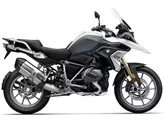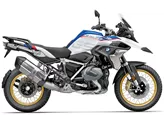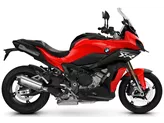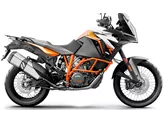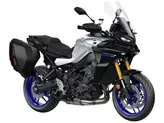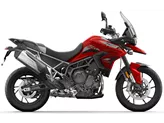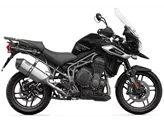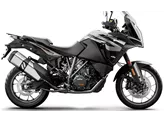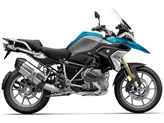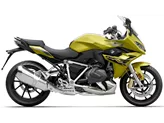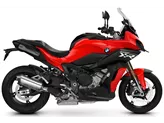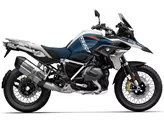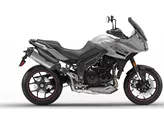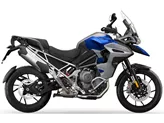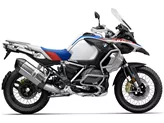Triumph Tiger 900 GT Pro 2020 vs. BMW R 1250 GS 2019
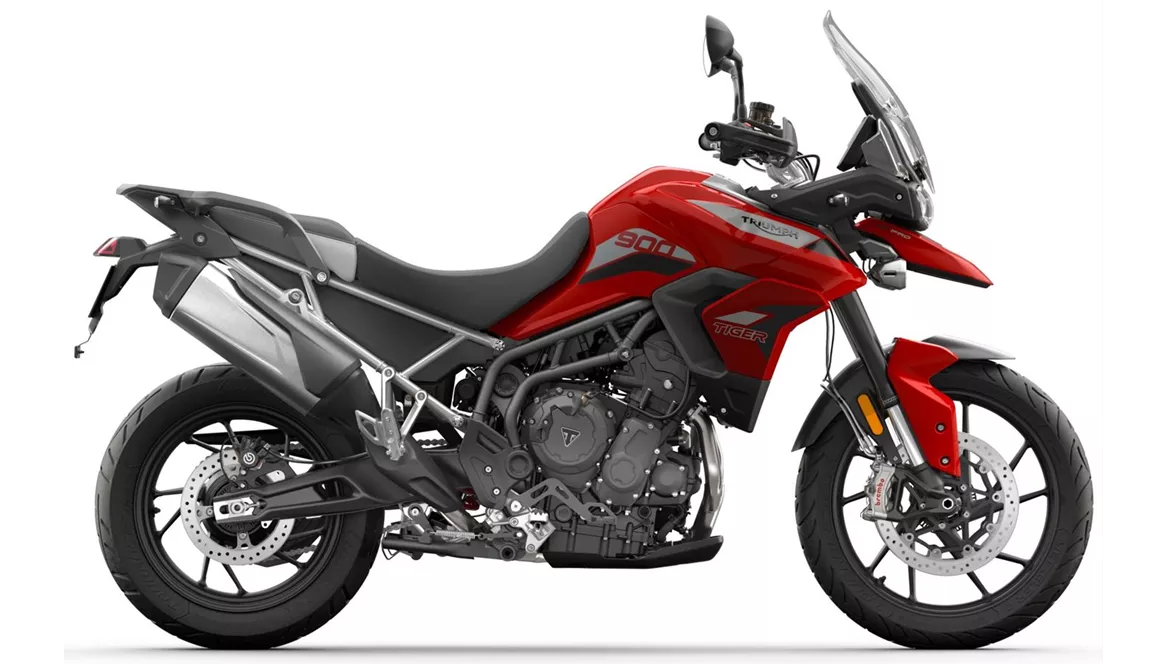
Triumph Tiger 900 GT Pro 2020

BMW R 1250 GS 2019
Vue d’ensemble - Triumph Tiger 900 GT Pro 2020 vs BMW R 1250 GS 2019
The Triumph Tiger 900 GT Pro 2020 and the BMW R 1250 GS 2019 are both powerful and versatile enduro motorcycles. However, they have some key differences in terms of their technical specifications and features.
Starting with the engine and drive train, the Triumph Tiger 900 GT Pro 2020 is equipped with a three-cylinder inline engine with a displacement of 888cc. It produces 95.2 horsepower and 87 Nm of torque. On the other hand, the BMW R 1250 GS 2019 features a two-cylinder boxer engine with a displacement of 1254cc. It delivers a higher power output of 136 horsepower and a torque of 143 Nm. Both motorcycles have electric starters and chain transmissions, but the BMW R 1250 GS 2019 uses a prop shaft for its transmission.
In terms of suspension, the Triumph Tiger 900 GT Pro 2020 comes with an upside-down telescopic fork with a diameter of 45mm and a travel of 180mm at the front. The rear suspension consists of a swing arm with a monoshock and offers a travel of 170mm. The suspension on the Tiger 900 GT Pro is electronically adjustable, allowing for more customization. On the other hand, the BMW R 1250 GS 2019 features a telelever front suspension with a diameter of 37mm and a travel of 190mm. The rear suspension is a single swing arm with a monoshock and offers a travel of 200mm. The front suspension on the BMW R 1250 GS 2019 is only adjustable for preload.
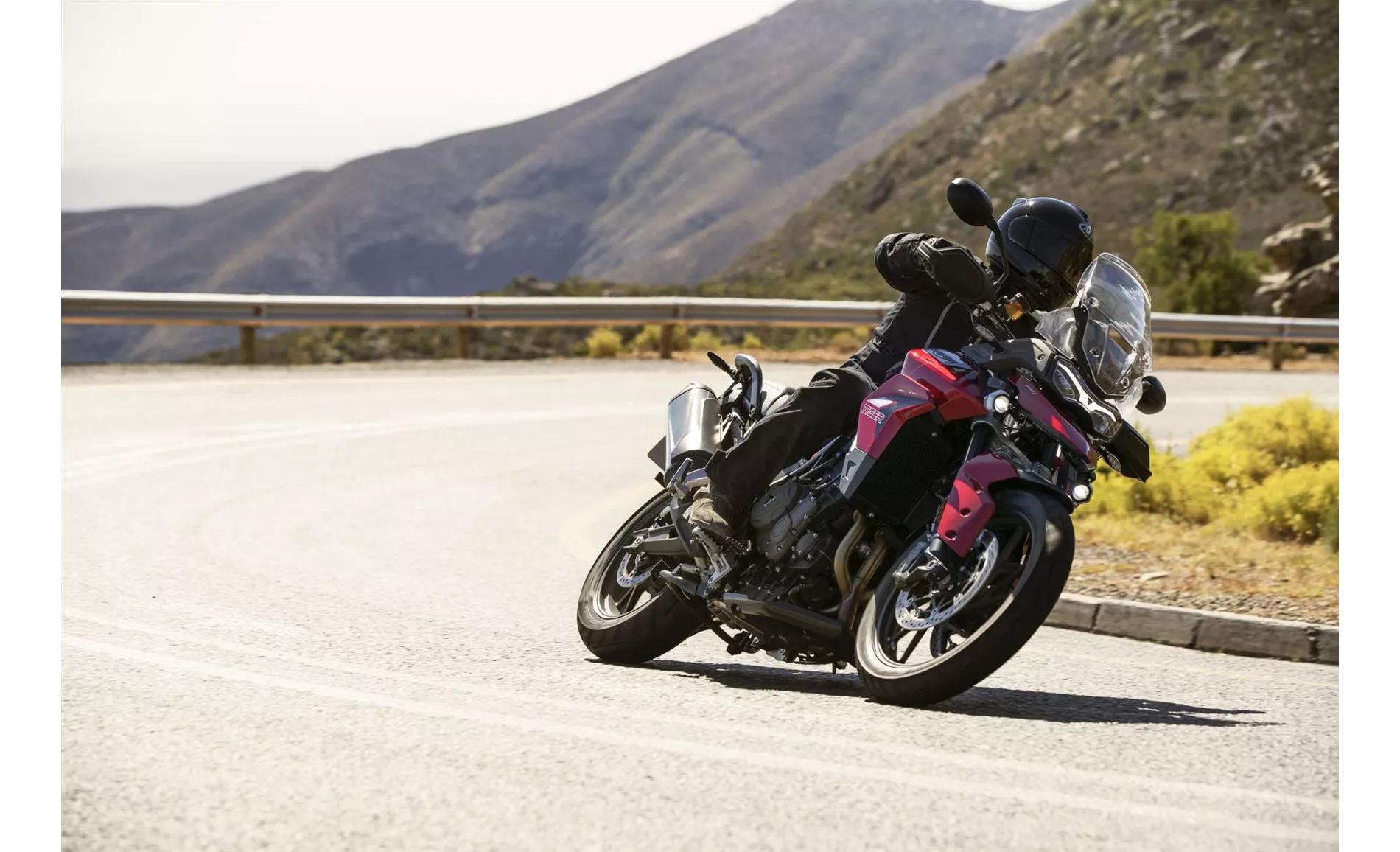
Triumph Tiger 900 GT Pro 2020
In terms of chassis, both motorcycles have steel frames. The Triumph Tiger 900 GT Pro 2020 has a tubular frame with a rake of 65.4 degrees and a trail of 133.3mm. The BMW R 1250 GS 2019 has a load-bearing engine frame with a slightly smaller rake of 62.9 degrees and a trail of 109mm.
Both motorcycles have double disk brakes at the front, providing stable braking performance. The Triumph Tiger 900 GT Pro 2020 comes with advanced rider assistance systems such as electronically adjustable suspension, riding modes, cornering ABS, ride by wire, and traction control. The BMW R 1250 GS 2019 also offers ABS, anti-slipping control, riding modes, and ride by wire.
In terms of dimensions and weights, both motorcycles have a 19-inch front tire diameter and a 17-inch rear tire diameter. The Triumph Tiger 900 GT Pro 2020 has a rear tire width of 150mm, while the BMW R 1250 GS 2019 has a rear tire width of 170mm. The wheelbase on the Triumph Tiger 900 GT Pro 2020 is slightly longer at 1556mm compared to the 1525mm wheelbase on the BMW R 1250 GS 2019. The seat height on the Triumph Tiger 900 GT Pro 2020 is adjustable from 810mm to 830mm, while the BMW R 1250 GS 2019 has a higher fixed seat height of 850mm, which can be increased to 870mm. Both motorcycles have a fuel tank capacity of 20 liters.
In terms of equipment, both motorcycles come with LED headlights. The Triumph Tiger 900 GT Pro 2020 also features LED daytime running lights, a heated seat, and a TFT display. The BMW R 1250 GS 2019 offers an adjustable windscreen and a color TFT display as standard.

BMW R 1250 GS 2019
In terms of strengths, the Triumph Tiger 900 GT Pro 2020 stands out for its characterful three-cylinder engine, agile turn-in behavior, quickshifter as standard, electronically adjustable suspension, generous standard equipment, good ergonomics, and good wind and weather protection. It is also suitable for long-distance riding. On the other hand, the BMW R 1250 GS 2019 is praised for its extremely high-torque boxer engine, comfortable seating position for long distances, stable braking performance, good weather protection, color TFT display, and LED headlights.
As for weaknesses, the Triumph Tiger 900 GT Pro 2020 has a flood of switches on the left handlebar, which can be overwhelming for some riders. The BMW R 1250 GS 2019 has manageable standard equipment and a long surcharge list, and its appearance is described as jagged with little elegance.
In conclusion, both the Triumph Tiger 900 GT Pro 2020 and the BMW R 1250 GS 2019 are capable and well-equipped enduro motorcycles. The Triumph Tiger 900 GT Pro 2020 offers a characterful three-cylinder engine and advanced features, while the BMW R 1250 GS 2019 impresses with its high-torque boxer engine and comfortable riding position. The choice between the two ultimately depends on the rider's preferences and priorities.
Caractéristiques techniques Triumph Tiger 900 GT Pro 2020 par rapport à BMW R 1250 GS 2019
Avantages et inconvénients en comparaison
Avantages et inconvénients en comparaison
Triumph Tiger 900 GT Pro 2020
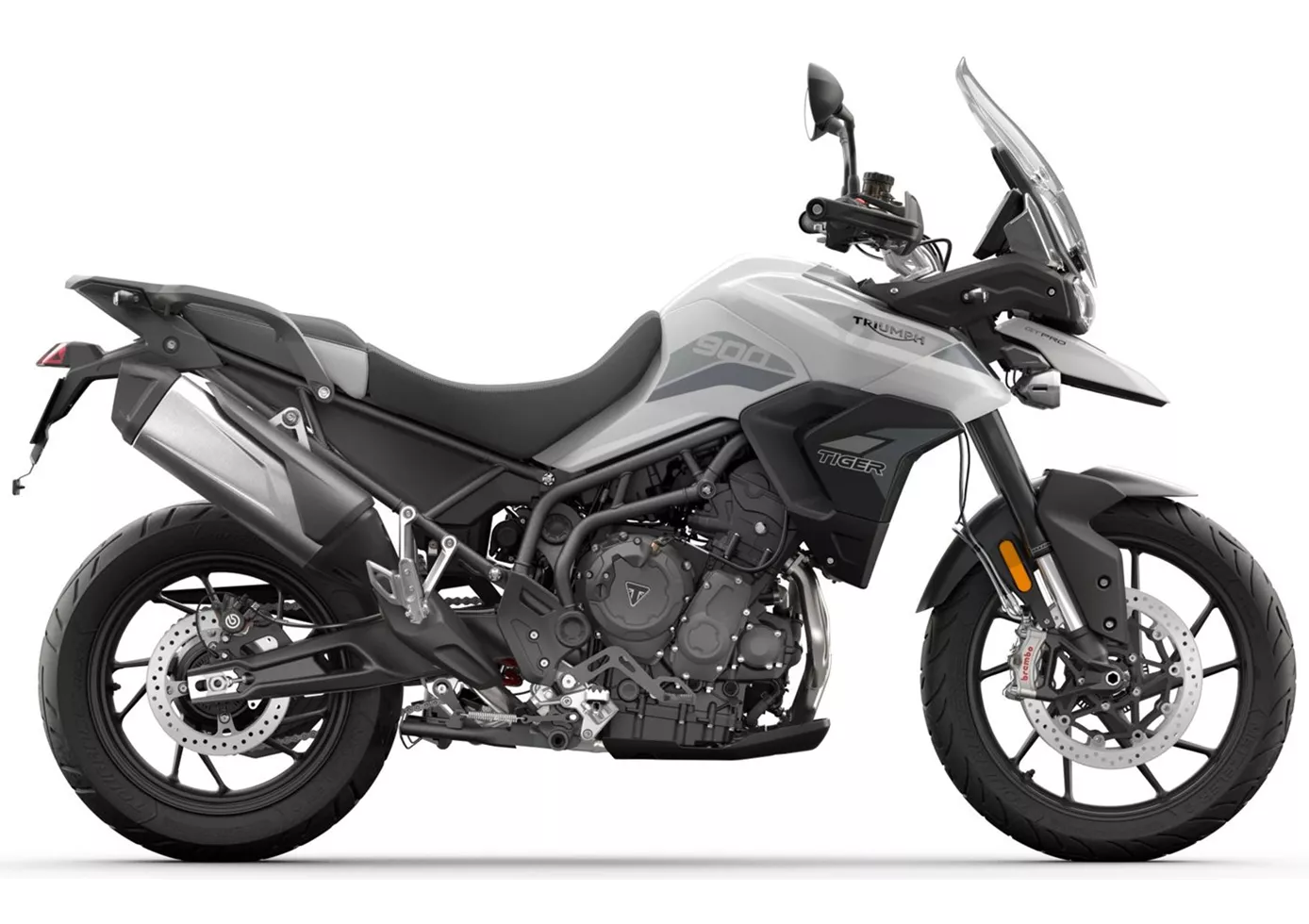
Les bonnes choses prennent du temps, dit-on. Chez Triumph, on s'y est tenu et avec la Tiger 900 GT Pro, on a mis sur les jantes en fonte une moto qui poursuit la longue et fructueuse voie de la 800 avec de nombreuses améliorations de détails et qui est aussi bien une moto pratique pour le quotidien que pour des tours et des voyages prolongés. Le triple est devenu plus pointu, tout en restant un moteur harmonieux avec lequel même les débutants ne peuvent pas se tromper, sans pour autant ennuyer les motards expérimentés. Et ce, grâce à des débattements de suspension suffisants sur des routes de différentes qualités ainsi que sur des passages tout-terrain tout à fait modérés. Nous n'avons pas trouvé grand-chose à redire à la première impression, mais nous allons certainement examiner la Tiger de plus près.
BMW R 1250 GS 2019

La BMW R 1250 GS est l'évolution logique de la R 1200 GS - logique surtout parce qu'on ne peut pas s'attendre à ce qu'une moto aussi populaire soit radicalement modifiée. En conséquence, le design est modifié avec précaution et les options connues sont conservées pour le châssis et l'électronique. Le nouveau nom R 1250 GS promet cependant un nouveau moteur - et il a effectivement de quoi faire ! 136 ch à 7750 tours et pas moins de 143 newtons-mètres de couple maximal à 6250 tours, c'est une véritable bombe ! BMW rénove ainsi presque parfaitement la grande GS : elle reste clairement identifiable, dispose d'un peu plus d'électronique de série, d'une liste de prix supplémentaires toujours aussi longue (que la clientèle aime cocher de A à Z) et d'un moteur encore plus performant et souverain - que peut-on demander de plus ?
Comparaison des prix Prix moyen du marché Triumph Tiger 900 GT Pro vs BMW R 1250 GS
There are a few key differences between a Triumph Tiger 900 GT Pro 2020 and a BMW R 1250 GS 2019. In terms of price, the actual average price of a BMW R 1250 GS 2019 is about 44% higher. Compared to BMW R 1250 GS 2019 there are less Triumph Tiger 900 GT Pro 2020 bikes available on the 1000PS.de Marketplace, specifically 5 compared to 104. It takes less time to sell a BMW R 1250 GS with 46 days compared to 88 days for the Triumph Tiger 900 GT Pro. Since model year 2020 1000PS.de editors have written 10 reviews for the Triumph Tiger 900 GT Pro and 50 reviews for the BMW R 1250 GS since model year 2019. The first review for the Triumph Tiger 900 GT Pro was published on 12/3/2019 and now has more than 65,300 views. This compares to more than 305,600 views for the first review on BMW R 1250 GS published on 9/19/2018.



